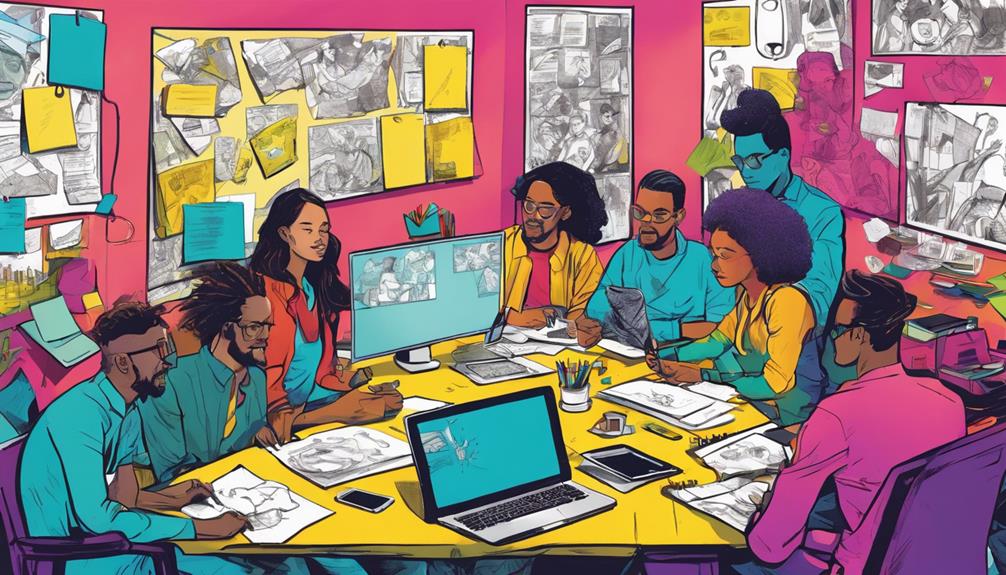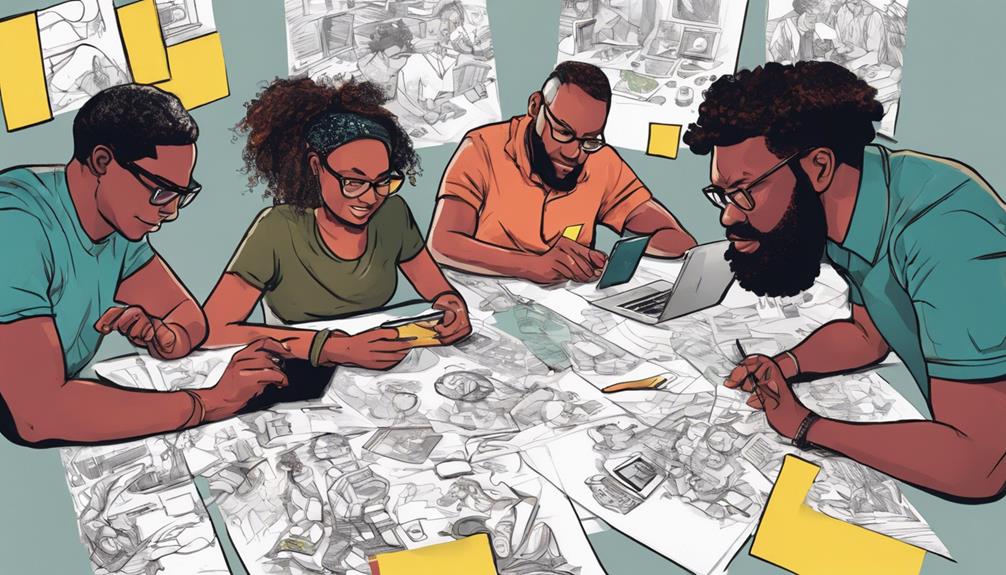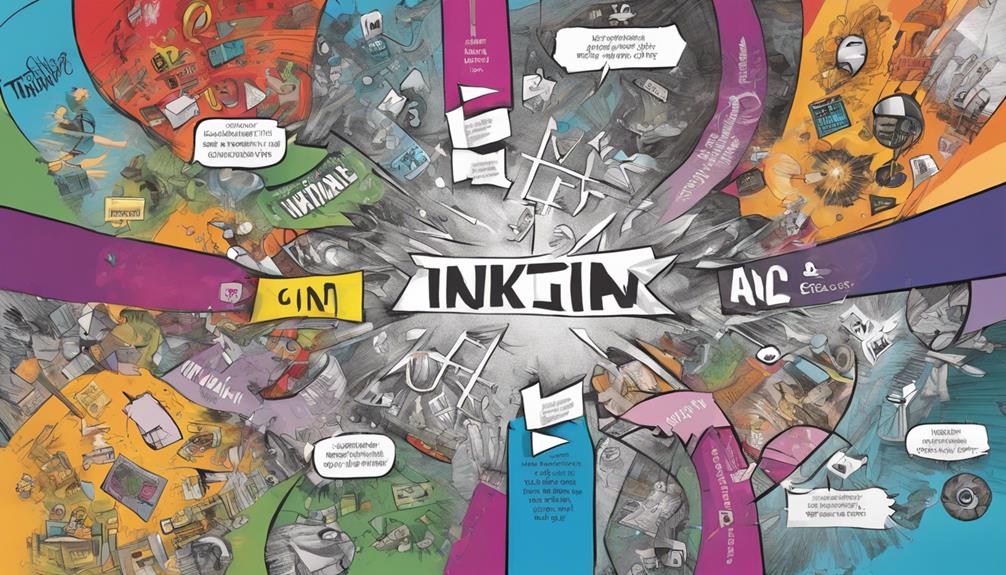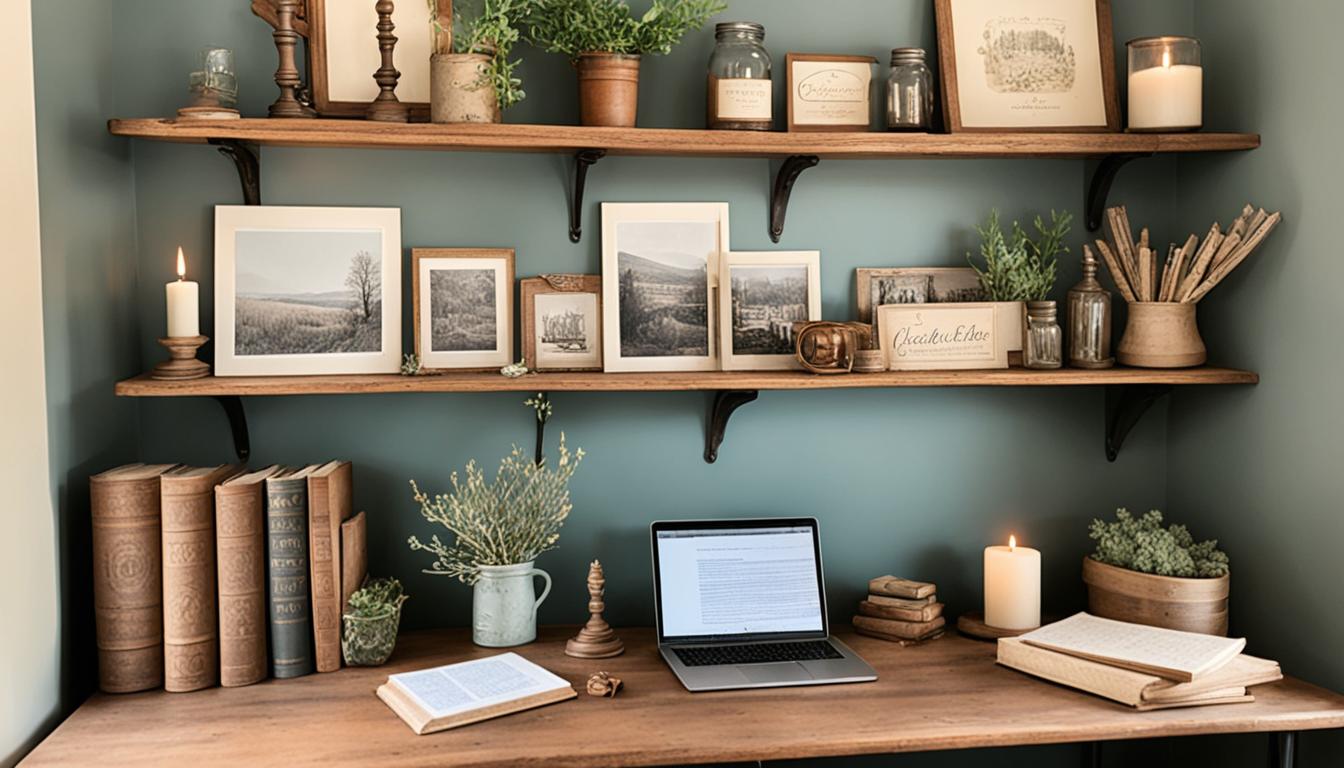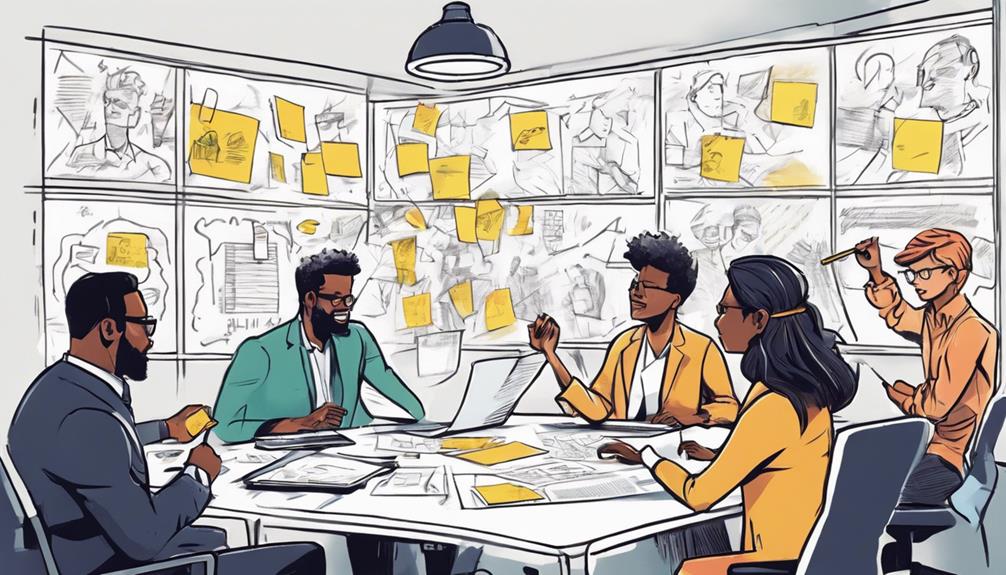Explore design thinking exercises like empathy mapping, SCAMPER technique, and collaborative prototyping to fuel your creativity. Engage in mind mapping for idea organization and Crazy 8s challenge for unconventional thinking. Collaborate to leverage diverse perspectives and foster innovative solutions. Immerse yourself in 5 Ws and H analysis for deep exploration of design challenges. These exercises will spark your creativity and lead to user-centric solutions. Harness your potential with these dynamic approaches!
Key Takeaways
- Engage in empathy mapping to understand user perspectives and behaviors deeply.
- Utilize SCAMPER technique for innovative problem exploration.
- Visualize ideas with mind mapping for enhanced organization.
- Collaborate for diverse perspectives and collective refinement.
- Embrace unconventional thinking with Crazy 8s and Worst Possible Idea exercises.
Empathy and User Research
To kickstart your understanding of user needs and emotions, engage in empathy mapping exercises to explore their perspectives and behaviors. By delving into empathy mapping, you can grasp the emotions, thoughts, and behaviors users exhibit throughout their interactions with a product or service. This process uncovers valuable insights about user needs and preferences, guiding design decisions that prioritize user experiences.
Furthermore, user research exercises offer a deeper understanding of your target audience. Persona development humanizes user data, enabling teams to empathize with their users on a more personal level. As you empathize with users, you gain a clearer picture of their pain points and desires, leading to more effective design solutions.
Customer journey mapping complements empathy mapping by visually depicting the steps users take when engaging with a product. This visualization not only reveals pain points but also highlights opportunities for improvement, ensuring that design decisions are rooted in enhancing user experiences.
Ideation and Brainstorming
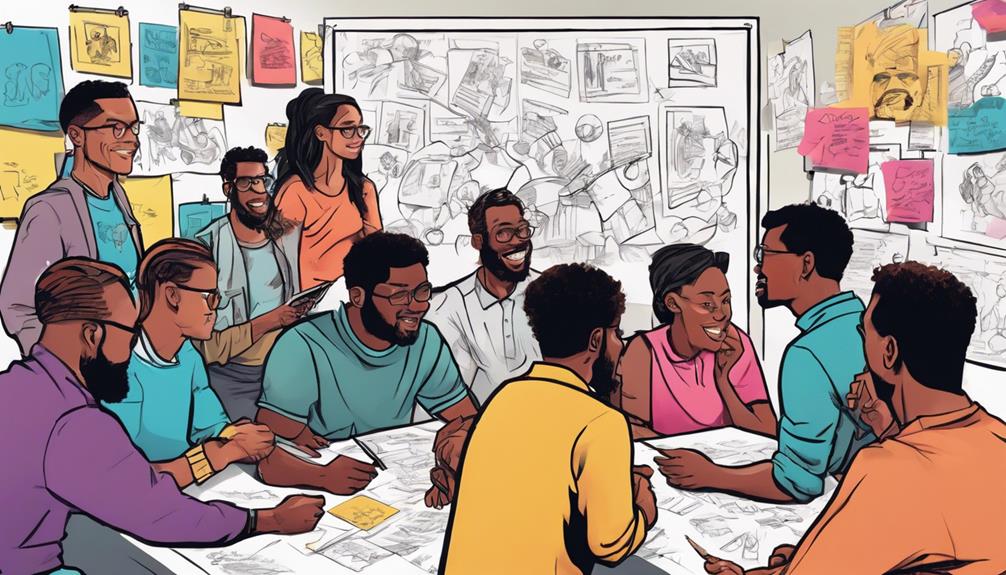
Engage in dynamic brainstorming sessions to foster swift idea generation and innovation. These sessions are essential for creating a collaborative environment where diverse perspectives merge to propel the ideation process forward. Utilizing tools like the SCAMPER technique can help in exploring various dimensions of a problem, leading to the generation of innovative solutions. Ideation, at its core, is about driving exploration and creativity, enabling teams to think outside the box and come up with unconventional ideas.
To visualize the importance of ideation and brainstorming, consider the following table:
| Benefits of Ideation and Brainstorming |
|---|
| Swift Idea Generation |
| Collaborative Environment |
| Innovative Solutions |
| Multiple Solutions |
Through structured design thinking exercises, teams can harness the power of ideation to unleash creativity and produce a multitude of solutions to address users' challenges effectively. Embrace the ideation phase as a springboard for generating fresh and inventive ideas that can transform your design process.
Visualization Tools
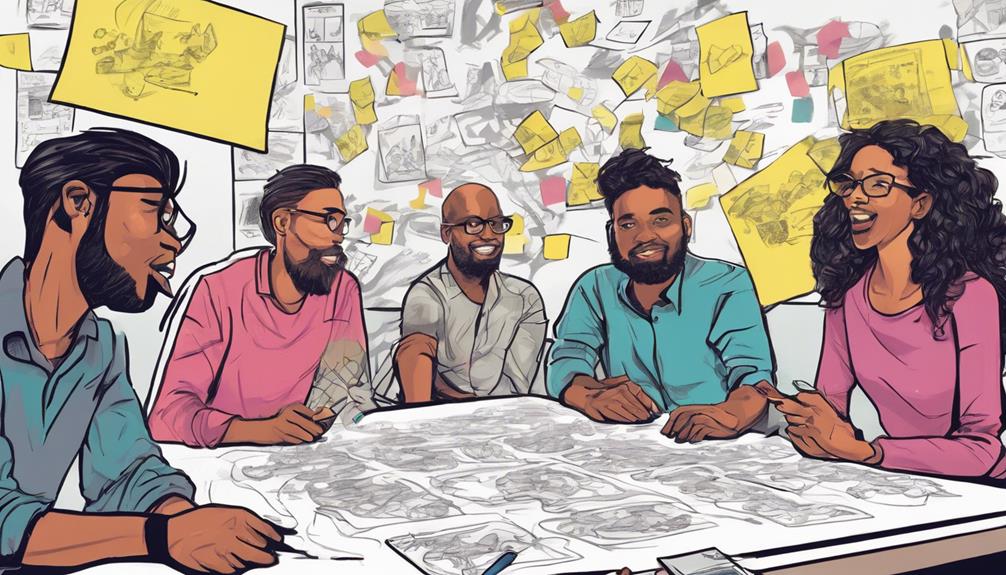
Utilize visualization tools such as mind mapping and concept mapping to enhance idea organization and foster deeper exploration of connections within your design thinking process. These tools provide a structured format for visually representing relationships between concepts, stimulating further ideation and aiding in brainstorming sessions.
By breaking down complex ideas into manageable components, mind mapping and concept mapping facilitate the generation of a wide range of ideas and solutions. Additionally, the visual representation of relationships and connections offered by these tools enhances collaboration and communication within design thinking teams.
Leveraging visualization tools not only helps in clarifying thoughts but also encourages creativity by allowing for a more detailed exploration of ideas. Incorporating these tools into your design thinking process can lead to more effective brainstorming sessions and improved analysis of concepts, ultimately enhancing the overall creativity and productivity of your team.
Collaborative Design

Collaborative design involves multidisciplinary team members coming together to tackle design challenges through open collaboration and idea generation. When engaging in collaborative design exercises, team members can enhance their creative output and problem-solving skills.
Here are some key aspects of collaborative design:
- Collaboration: Working together allows team members to leverage diverse perspectives and expertise in the design process.
- Idea Generation: Open collaboration fosters the generation of a wide range of innovative ideas.
- Prototyping: Collaborative prototyping enables teams to quickly iterate and refine design concepts collectively.
- Co-Design Sessions: These sessions facilitate the active involvement of team members with varying backgrounds, promoting richer and more holistic design solutions.
Through collaborative sketching and shared understanding, team members can align their visions and create impactful designs that cater to a broader range of needs and preferences.
Innovative Ideation Techniques

To spark creativity and generate fresh ideas, design teams can employ innovative ideation techniques that push the boundaries of conventional thinking. By incorporating diverse perspectives and creative problem-solving methods in design thinking workshops, teams can foster rapid idea generation and uncover innovative solutions.
Techniques such as the Crazy 8s challenge, where participants generate 8 ideas in 8 minutes, and the Worst Possible Idea exercise, which explores extreme solutions, encourage unconventional thinking. Additionally, the 5 Ws and H analysis prompts participants to explore deeply into the Who, What, Where, When, Why, and How aspects of a design challenge.
These ideation techniques aim to inspire brainstorming sessions that lead to user-centric solutions through journey mapping and an iterative problem-solving approach. By embracing these methods, design teams can generate ideas that challenge the status quo and result in groundbreaking innovations.
Prototyping and Testing

In the design process, creating low-fidelity prototypes enables designers to test and iterate on their ideas efficiently. When it comes to prototyping and testing, there are several key methods to contemplate:
- Low-fidelity testing: Prototyping allows for quick and inexpensive testing of design concepts before investing in high-fidelity prototypes.
- Role-playing: Engaging in role-playing activities helps designers understand user interactions and needs more profoundly.
- Simulation techniques: Utilizing simulation techniques aids in simulating user interactions with the design to gather valuable insights.
- Wizard of Oz testing: This method involves a human 'wizard' controlling interactive systems behind the scenes to evaluate user experiences.
Frequently Asked Questions
What Activity Encourages Creative Thinking?
Want to boost your creative thinking? Try the Dream/Gripe Session! It pushes you to define challenges creatively, sparking innovation. It's a fantastic exercise for accessing your imagination and generating fresh ideas.
What Is the Design Thinking Exercise?
To understand the design thinking exercise, start by exploring its stages: empathize, define, ideate, prototype, and test. These hands-on activities drive creativity, collaboration, and innovation, guiding teams to develop user-centric design solutions through structured exercises.
How Do You Use Design Thinking to Generate Innovative Ideas?
To generate innovative ideas using design thinking, you empathize with users, ideate creatively, prototype solutions, and test them. Through collaborative exercises like co-design sessions and storyboarding, you refine and iterate for innovation.
How Do You Exercise Your Creativity?
You exercise your creativity by exploring new paths, embracing challenges, and daring to push boundaries. Embrace curiosity, nurture imagination, and take risks. Remember, creativity thrives when you let go of fear and allow yourself to think freely.
Conclusion
So there you have it, a few design thinking exercises to spark your creativity and innovation.
Remember, the key to success is to step outside your comfort zone, embrace the unknown, and challenge the status quo.
Who knows, maybe the next groundbreaking idea is just waiting for you to discover it.
Keep pushing boundaries, thinking outside the box, and surprising yourself with what you can achieve.
Happy creating!
